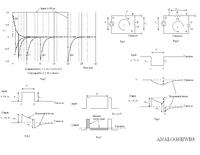AnalogNewb
Junior Member level 1

Hi Everyone,
A DC blocking capacitor removes any DC offset from an input signal. I've been doing this for years without thinking about it.
My question is, how does it know what the local ground potential is?
My only thought on this is that the output side of the cap is just pushing and pulling electrons, and it adds to / subtracts from whatever the voltage on the input to the circuit already is.
With an inverting op-amp input, it's going into the "virtual ground" of the circuit so that sort of makes sense.
But now I am using a DC blocking cap to feed something that's not an op-amp: an ADM3491 differential line receiver.
So again, how does the cap know where ground is?
Thanks.
A DC blocking capacitor removes any DC offset from an input signal. I've been doing this for years without thinking about it.
My question is, how does it know what the local ground potential is?
My only thought on this is that the output side of the cap is just pushing and pulling electrons, and it adds to / subtracts from whatever the voltage on the input to the circuit already is.
With an inverting op-amp input, it's going into the "virtual ground" of the circuit so that sort of makes sense.
But now I am using a DC blocking cap to feed something that's not an op-amp: an ADM3491 differential line receiver.
So again, how does the cap know where ground is?
Thanks.

